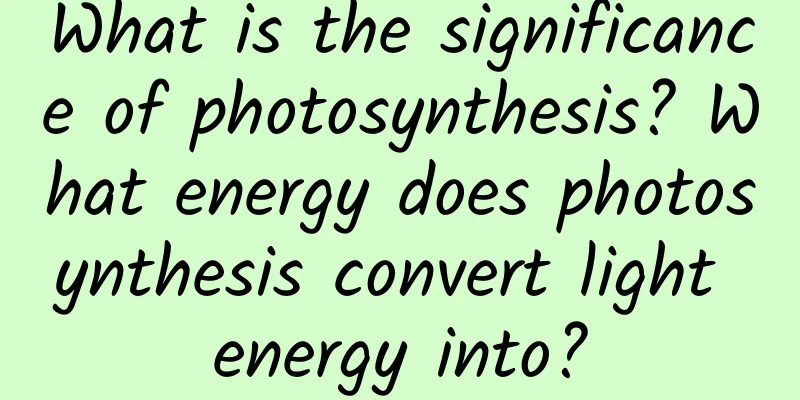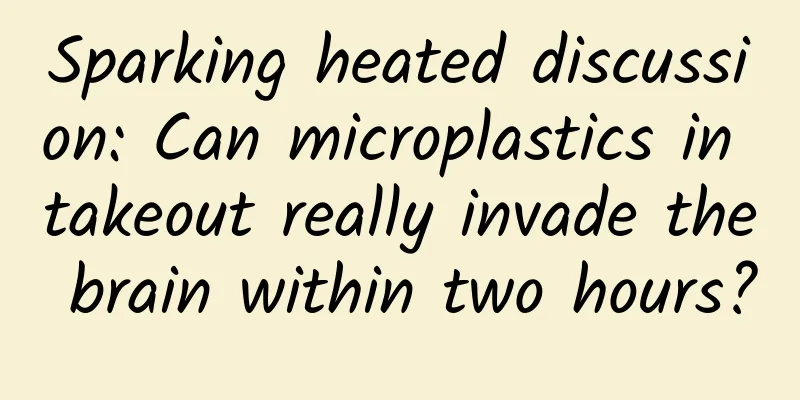What is the significance of photosynthesis? What energy does photosynthesis convert light energy into?

|
Photosynthesis is the sum of a series of complex metabolic reactions. It is the basis for the survival of the biological world and an important medium for the earth's carbon-oxygen cycle. Light and oxygen require carbon dioxide, which is the raw material for photosynthesis. Therefore, increasing the concentration of carbon dioxide will enhance the efficiency of photosynthesis. Does photosynthesis maintain the oxygen content in the atmosphere? What is the significance of photosynthesis? The following article will share with you. Contents of this article 1. What is the significance of photosynthesis? 2. What energy does photosynthesis convert light energy into? 3. What effect does high oxygen concentration have on photosynthesis? 1What is the significance of photosynthesis1. Solar energy is converted into chemical energy. Plants use water and carbon dioxide to convert sunlight into biochemical energy, which is stored in the organic compounds they manufacture. The oil and coal that people use today are actually the products of photosynthesis of green plants in ancient times. This energy can not only be used for plant growth, but also can meet the nutritional needs of humans after eating these plants, and is also a source of energy for human activities. 2. Inorganic matter is converted into organic matter. The world's main organic matter is produced by plants. Green plants participate in the conversion of carbon to produce organic matter such as starch. Animals absorb and utilize these organic matter, while absorbing oxygen and releasing carbon dioxide. In this way, all animals also participate in the cycle of organic matter conversion and provide food sources for other organisms. Food, sugar, fruit, etc. required for human survival all come from photosynthesis, which has promoted the development of human society. 3. Regulate the composition of the atmosphere. Photosynthesis maintains the proper oxygen content in the atmosphere. The oxygen released during photosynthesis provides conditions for aerobic respiration of animals and slowly forms an ozone layer, which can reduce the damage of ultraviolet radiation in sunlight. Photosynthesis removes carbon dioxide from the air and maintains the carbon-oxygen balance in the biosphere. 2What energy does photosynthesis convert light energy into?Photosynthesis converts light energy into chemical energy. Photosynthesis is the synthesis of light energy. It is a biochemical process in which plants, algae and some bacteria, under the irradiation of visible light, use photosynthetic pigments to convert carbon dioxide and water into organic matter through light reaction and dark reaction, convert light energy into chemical energy stored in organic matter, and release oxygen. Photosynthesis is the sum of a series of complex metabolic reactions. It is the basis for the survival of the biological world and an important medium for the carbon-oxygen cycle of the earth. Plants are called producers in the food chain because they can use inorganic matter to produce organic matter and store energy through photosynthesis. Through consumption, consumers in the food chain can absorb the energy stored by plants and bacteria, with an efficiency of about 10% to 20%. For almost all organisms in the biological world, this process is the key to the survival of plants. In the carbon-oxygen cycle on earth, photosynthesis is indispensable. 3What effect does high oxygen concentration have on photosynthesis?It is not conducive to photosynthesis and reduces the efficiency of photosynthesis. Photosynthesis requires carbon dioxide, which is the raw material of photosynthesis. Therefore, increasing the concentration of carbon dioxide will enhance the efficiency of photosynthesis. Increasing the oxygen concentration will enhance respiration, increase the consumption of organic matter, and reduce production. Water is the raw material for photosynthesis. Reducing water will weaken photosynthesis. Reducing water will cause leaves to wilt, affecting photosynthesis efficiency and leading to a decrease in yield. Therefore, what can improve the efficiency of photosynthesis and increase crop yields is to increase the concentration of carbon dioxide. |
<<: Will all orthodontic patients develop braces-like faces? Is there a way to prevent it?
>>: The history of smallpox eradication: You should know
Recommend
What to do if pregnant women have pink vaginal discharge
With the rapid development of the economy, many s...
Are emergency contraceptive pills effective if taken within 72 hours?
When couples have sex, they are sometimes too exc...
A woman developed "immortal cancer" after riding for 3 months... Many people ride in the wrong posture...
Editor: Gong Zixin Cycling It is one of the most ...
Girlfriend's feet smell
We are actually not unfamiliar with foot odor. Ma...
How to treat heel pain caused by postpartum disease?
During the confinement period, women need to take...
How do women regulate their endocrine system?
When women have endocrine disorders, they are ver...
What happens if I drink ice water during my period?
Many girls will not eat cold food when they have ...
What happens if menstruation is delayed and irregular?
Menstruation is something that all of us women ha...
Pictures of menstrual blood
If the color of menstrual blood is not right, the...
Are there any side effects of labor analgesia?
Painful childbirth is something that every female...
What should I do if lochia recurs after normal delivery?
Nowadays, many new mothers not only have to worry...
Reasons for a week late menstruation
Menstruation is a physiological phenomenon unique...
Is mild cervical erosion serious?
For female friends, generally after marriage, the...
This kind of pregnancy is fatal: it can explode at any time, is good at disguise, and cannot be prevented...
I once heard a very sad story from a friend: A co...
Does sex hurt women?
Sexual intercourse is a good thing, which can pro...









